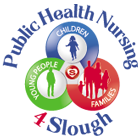UNDERSTANDING REASONING AND THINKING
When talking to children, you will need to be aware of the complexity of the questions you ask. The Blank, Rose and Berlin (1978) model shows us the development of the types of questions children are able to understand. 3 year olds will generally be developing their understanding at levels 1 and 2. 5 year olds will typically be developing their understanding at levels 3 and 4. It is particularly important to be aware of these levels of questioning in teaching and SLT offer a range of training packages for practitioners which include more information about this model. Please contact us or see our ‘professionals area’ for more information. Previous learners have reported that this has made a huge difference to their practice.
Level 1- naming things e.g. ‘point to the tree’, ‘what’s this?’
Level 2- describing things e.g. answering questions with who, what and where? ‘find something I can eat?’ ‘who is swimming?’ ‘where is the boy?’
Level 3- talking about stories and events e.g. ‘what might happen next?’ ‘what will Mummy say?’ ‘tell me the story’ ‘how does daddy feel now?’
Level 4- solving problems and answering ‘why?’ questions e.g. ‘what will happen if it rains?’ ‘what could you do if you there are no paper towels left?’ ‘why is the boy crying?’
Activities to target specific questions words
To respond appropriately to a simple question involving ‘where?’
- Hide a toy in the playhouse/dolls house/outdoor area and ask the child ‘Where is teddy?’
- Use a simple story with a hidden character and ask the child e.g. ‘Where is the duck?’
- Ask a small group to find somewhere to stand around the room or outdoor area. Ask the child ‘Where is Charlie?’
- Have a variety of containers in front of the child. Hide a small toy and ask the child ‘Where is the mouse?’
- Set up a treasure hunt and encourage the child to find ‘treasure’ by asking ‘Where is it?’
To respond appropriately to simple instructions containing ‘what?’
- Have a range of familiar objects in a bag. Adult to ask ‘What is this? Encourage the child to respond appropriately using a noun e.g. ‘ball’.
- Hide objects in the sand tray. Encourage the child to find an object and respond to the adult’s question ‘What have you found?’
- Look at a simple picture book or photographs with the child and encourage them to name the object in the picture, in response to the adult asking ‘What is that?’
- Play a musical instrument or make a sound out of the child’s sight and ask the child ‘What can you hear?’
- During simple imaginative play, make a toy carry out an action e.g. running and ask the child ‘What is teddy doing?’
- Looking at a simple picture book or photographs with the child and encourage them to respond to questions e.g. ‘What is the cat doing?’
To respond appropriately to a simple question involving ‘who?’
- Have photographs of familiar adults and children in a bag or box. The child selects a picture and the adult asks ‘Who is it?’
- Show the child some puppets before hiding them out of sight. The adult says ‘Knock knock. Who is there?’ The child is encouraged to guess which puppet is hiding.
- Pass a hat around the group to music. When the music stops, the adult asks the child ‘Who’s got the hat?’
- All the children select a musical instrument. The adult asks the child ‘Who has the drum?’
- Present the child with a range of action pictures. Ask the child ‘Who is running?’
At the last stage of this model, children will start to develop reasoning and thinking skills.

